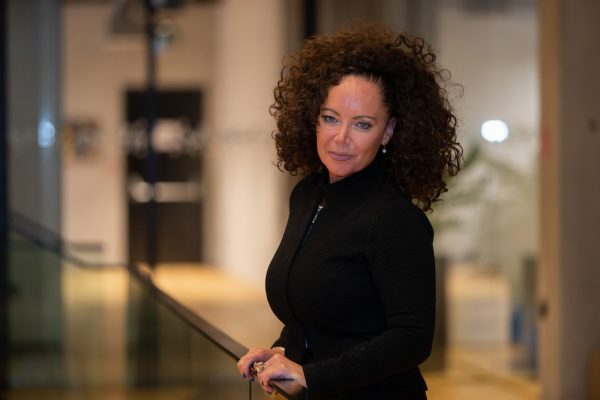Diversity and Inclusion in Tech

A lack of diversity and inclusion has been a significant issue for many industries. However, tech enterprises are showing the way. As companies struggle to locate the skilled staff they need, ensuring they have high levels of diversity and inclusion in their recruitment process is a legal necessity and a commercial imperative.
As businesses look towards a post-COVID trading landscape, how their enterprises are structured will have to change. Technology will be an enabler to achieve the transformations needed. However, the most fundamental change and one that can have a profound impact on enterprises ability to reach their customers is how they organise their workforces.
Creating a diverse and inclusive workforce is now a commercial imperative no business can ignore. IBM, in their report, Accelerating the Journey to HR 3.0, states: “Building a workforce that is diverse and inclusive, bringing together individuals with different skills, talents and ideas and giving them room to innovate. It also means providing flexibility in work location—especially in times of disruption from weather events or disease outbreak—while making sure employees have full access to all the tools they need to be productive.”
Currently, just 19% of UK IT professionals are female, and only 8.5% of senior leaders in the tech sector are from a BAME background. Yet more female graduates are coming out of universities than men, and 14% of the total working-age population comes from a BAME background.
Diversity and inclusion have been moving up the agendas of tech companies. However, this can often simply be lip service to appease critics of the inequalities that are still present across the sector. The current report from CNBC, which considered annual workforce disclosures, shows diversity is still the exception and not the rule across many of the world’s top tech companies.
Natashia Variava, Head of People, Ito World that launched the #ItoWomen Campaign to inspire, mentor and champion women looking to work, or working in, the technology and transport industries, told Silicon UK: “There is clearly an increasing focus on diversity and inclusion in the tech industry as the sector realises they are facing a significant diversity debt, especially when it comes to women, POC, and neurodiversity.”

Variava continued: “As a result, many across the tech sector are trying to come up quick fix solutions, but with mixed results. The urgency and need for diversity are recognised by the sector, but solutions required to address the debt are more complex and longer term than people realise – we cannot simply put a band aid on a systemic problem, we need to go back to the root causes of the issue that are deeply entrenched.”
Angelique Mohring, CEO of GainX, also points out that for many businesses, simply following their usual recruitment process offers the least cost and less friction: “We should all know by now there is a clear economic advantage to having a more diverse and inclusive workforce and board, but it is ‘safe and comfortable’ to hire, employ, and work with what you know, with what is familiar. Seeking out a robustly diverse workforce that is culturally, educationally, and economically different from you poses challenges – to your intellect, how you take decisions, how you communicate and ultimately how you operate.”

The talent gap
Creating a multifaceted workforce is clearly a critical component of every digital transformation roadmap. Indeed, according to TEKsystems that defines leaders and laggards with their digital transformation strategies with 70% of digital leaders have mature diversity, equity and inclusion practices in place compared to 44% of digital laggards, with 79% of digital leaders effectively develop a diverse and inclusive leadership pipeline (22% more effective than digital laggards).
The competition business leaders face is locating the staff they need with the right skills to keep pace. When diversity is included in the recruitment equation, even more divergence can be seen—the latest .TECH report concludes that 32% of women in tech from underrepresented groups do not perceive they have the same opportunities to grow and advance in their companies as their colleagues. The World Economic Forum also reveals that nearly half (48%) of women also reported seeing discrimination in terms of their technical abilities – double that of men.
Also, the DICE report clearly illustrates how talent is often discriminated against, often unintentionally, with women are vastly more likely to believe that gender inequality occurs in the tech industry. In fact, 58% of technologist respondents who identified as women stated they believe discrimination occurs frequently or very frequently, compared to 31% of men.
Chief People Officer, Alex Arundale, of the UK’s third-largest software company, Advanced, told Silicon UK: “Inclusion needs to be tackled from the top, and the more people from diverse backgrounds that are in leadership roles and seen to be actively involved in decision making provides more encouragement and motivation for others within the business to break down the barriers of yesterday.

“This year we have created diverse working groups set up and led by volunteers within the business focused on Black Lives Matters, LGBTQ+, female equality, disability and sustainability. They are championing change within the organisation and educating from within the business supported by aligned c-suite sponsors.”
Arundale concluded: “We have also launched our inaugural diversity pay gap this year. This is a significant milestone for us as a company. Whilst it is not currently a legal obligation, we recognise the importance of looking at these figures, alongside our gender pay gap. It is a vital step as we strive towards becoming a more equitable and inclusive organisation. As individuals, we may all be different, but when we come together we can make real change.”
Change across the business landscape has been accelerating. In addition, the pandemic has push businesses to adopt new working practices at speed. Yet, through all of these radical innovations, the importance of people has now diminished.
“Working with the TM Forum Council we are developing the Inclusion and Diversity Score (IDS) score because there is no real benchmark in the industry,” explained Vicky Sleight, Director of Diversity and Inclusion, at TM Forum. Without science-based targets and metric-based targets, we will get nowhere as we don’t know where we are today.

“With the help of Bain & Co we produced two major parts for the pilot. One is around data from the HR systems and the other is around employee sentiment. Mapping this data will help us to understand if an organisation has an inclusive culture and what steps they can take to make one. The pilot is happening as we speak. We have a handful of companies going through that now to allow us to tweak before a wider rollout and will announce the results later this year.”
Ito World’s Natashia Variava’s concludes: “While the tech industry’s growth has been phenomenal, the existing problems of diversity have only been exacerbated by the pandemic because we are having to hire so fast, and talent is being snapped up very quickly. Because the pandemic has made it even harder to find talented people at such a rapid rate, diversity is getting lost in the process. Part of the supply and demand issue is that the industry hasn’t tried very hard to be open to different kinds of people and expanding the types of people we look for will make this process easier.”
With Namrata Sandhu, CEO of cleantech company, Vaayu also pointing to a funding gap: “There is no shortage of skills in the tech sector – it is a sector built on aptitude and that spans across multiple geographies and ethnicities. The challenge building diverse workforces comes from a significant gap in funding. If diverse founders continue to struggle to raise finance, diversity in leadership positions will remain sparse at best. We need to look at which entrepreneurs are securing funding, but also the people giving the cash. Diversifying the investor ecosystem will have a profound impact on the makeup of founders.”

Moving to a more diverse and inclusive workforce delivers many advantages, not simply commercial gains. As enterprises must now innovate at speed and with different drivers directly influencing customer relationships, a varied workforce is essential.
Silicon in Focus
Anushka Davies, Head of Engagement, Diversity & Inclusion at Softcat PLC.

Anushka joined Softcat with a Maths and Computing degree to go into IT Sales. 11 years ago, Anushka moved into an L&D role, as Softcat began their journey in opening regional offices to drive the need for talent and support customers nationally. She also works on all things Diversity and Inclusion related and mental health. Over the last 18 months, a considerable amount of focus has been paid to ensuring we can remove the stigma associated with mental health in the workplace. Softcat signed the ‘Time to Change’ pledge in January 2018.
What is your current assessment of diversity and inclusion across the tech sector?
“Diversity and Inclusion across the tech sector are improving – there are certainly more conversations about increasing diversity across the sector than there ever has been in the past. Of course, it is still a very male-dominated sector, but more and more, we are seeing organisations creating initiatives to make the sector a more attractive and equal place to work.
“Tech is a part of everyone’s daily life, and this offers a huge opportunity for the right individual, the industry is thriving and growing and should be a very desirable place to work. As such diversifying talent at all levels in the sector is incredibly important, and it is fantastic we are seeing more of this now.”
Do businesses understand the value of a diverse and inclusive workforce?
“It is crucial companies understand the value of a diverse and inclusive workforce, as a diverse business outperforms one that isn’t. We need to be representing the community we serve, so we ourselves need to ensure that our own business concentrates on building an inclusive culture where employees can belong and thrive in; this leads to more engaged employees and better performance. That said, we can’t bring in diverse talent without making sure we get inclusion right though.”
What challenges do businesses in the tech sector must overcome to build genuinely inclusive and diverse workforces?
“Diversity and Inclusion needs to be seen as a business priority and therefore leaders at the top need to be fully invested in getting to know their employees better, understanding their backgrounds and genuinely appreciating that different people from different backgrounds with different opinions will drive better business outcomes.
“Building a workforce that is truly inclusive takes time but it’s something that you can build from the culture you have. People don’t want to come and just do their job, but want to find somewhere where they are valued and can add value to and feel part of a growing thriving community.”
Is the recruitment process broken when we consider diversity and inclusion?
“Recruiters need to challenge processes and work with hiring managers to help them understand why diversity is essential. Some easy recruitment processes can be built into existing ones to help encourage and attract more diverse candidates.
“We often see complicated, overly worded adverts or ones that have a gender bias in the language they use, so start by making them simpler to understand, and remove competitive or masculine language to attract more talent. For more experienced levels roles, it’s important that hiring managers are working closely with their recruiter to ask for a diverse longlist and shortlist of candidates. Also ensuring the interview panel is also diverse – a candidate wants to be able to see someone that is like them, someone they can be inspired by.”
Has the pandemic had a positive or negative impact on diversity and inclusion across the tech sector?
“The pandemic has shown leaders that employees can work from home effectively whilst balancing other personal and family commitments. The biggest challenge for most businesses has been finding ways to maintain the company culture and those human connections that are so important. At Softcat, we organised virtual fun events, increased our regular company communications and worked with managers to ensure teams are regularly connecting.
“Many organisations have improved their flexible working policies as a result of the pandemic, and it’s great to see roles being more widely available and seeming more attractive as a result of this flexibility. The pandemic has taught us all that being present around our family, and prioritising our wellbeing is very important – companies need to listen to this feedback, learn from the pandemic and provide employees with an environment where they can balance life, work and wellbeing better.”
From a recruitment perspective, is the tech sector still perceived by minority groups, for example, as difficult to get a job for them?
“As an industry we are doing much more, at grassroots level, to promote careers in our sector, address and change the sometimes negative perception or image they can have. Over the years, the tech sector has worked hard to be more inclusive, to help drive diversity and make the sector a more welcoming place to be. There is still much more to do, but perceptions of roles in tech sector are changing – adverts are simpler and not overly technical, and businesses now appreciate that they have a responsibility to build talent for the future of our sector.”